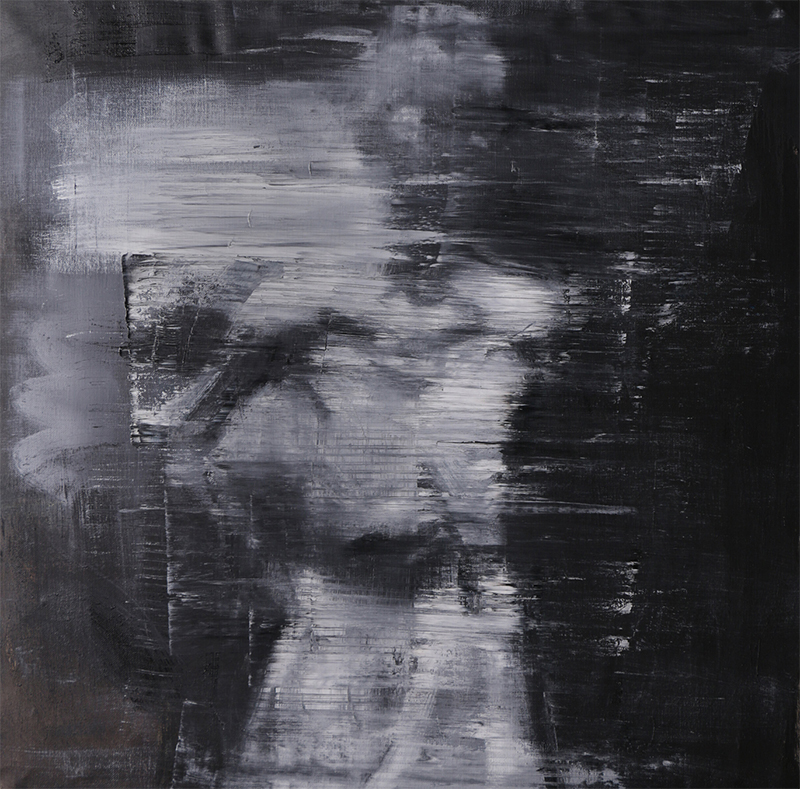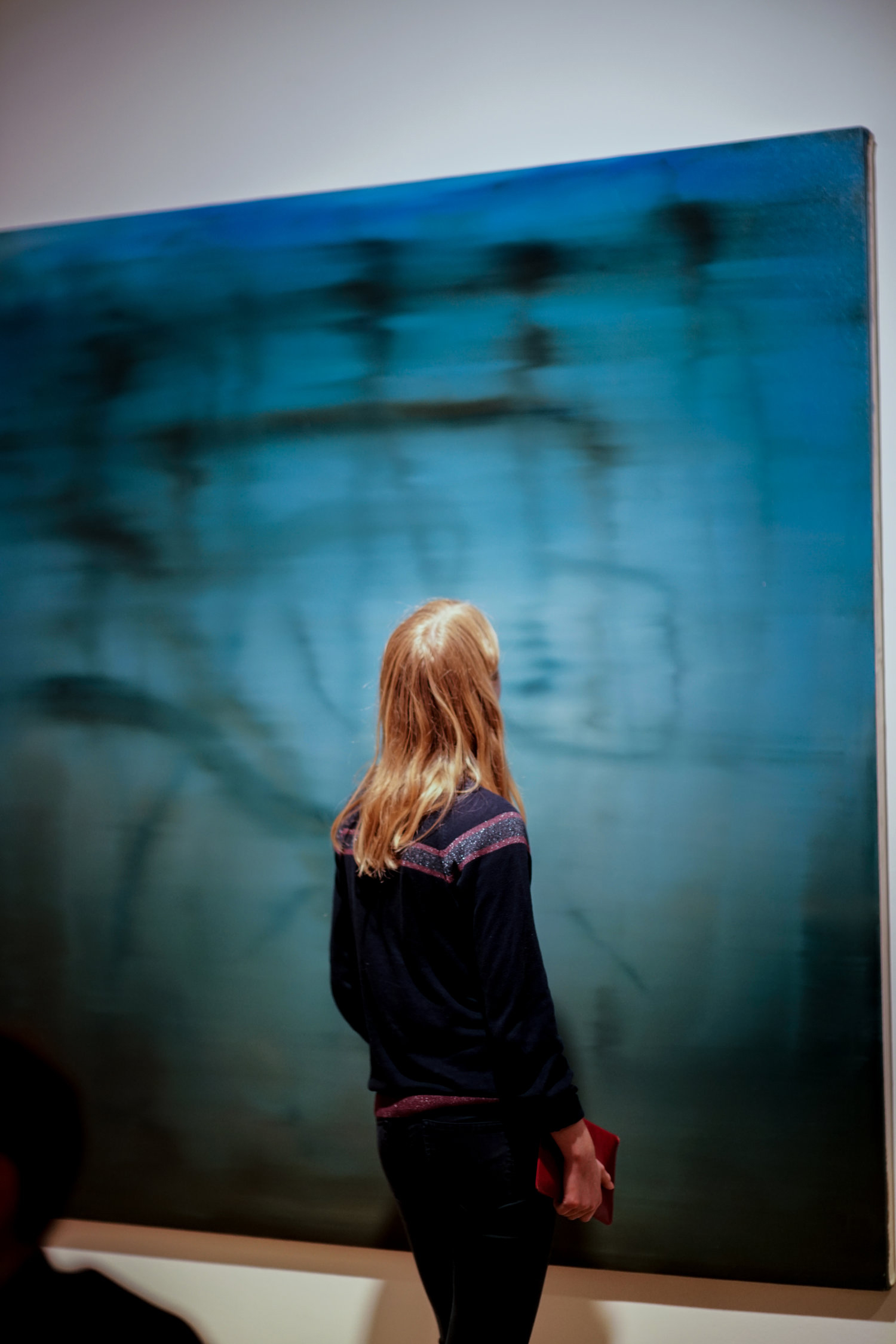Contemporary artist William Foyle’s work is a mixture of all the artists he admire and parts of their work he feels attracted to.
An older artist said to me when I asked for his advice that “many people will criticise your work and will say it’s no good, but you have to keep going as it’s only the strongest who continue painting”. This is certainly the most important piece of advice I have received in my life so far and I always remember this when I’m not feeling confident about my work.
Contemporary artist William Foyle

Artist portrait. Contemporary artist William Foyle.
Please tell us a little about yourself. What brought you to the world of art and how did you start?
I was born in Scotland and brought up on the Scottish Borders. My parents are a mix of Hungarian and Jewish ancestry. I have spent the majority of the past ten years working and living in London. My first memories of painting are with my grandmother who could paint anything with almost no effort at all. I remember how impressed I was by this. I was around four or five. And I suppose this is when my interest in painting began. I didn’t start painting seriously until my mid to late teens.
How do you deal with the conceptual difficulty and uncertainty of creating work?
I personally find the act of painting difficult. The work is always demanding more of you. But I prefer it that way. I think all the artists I admire have taken risks in their work and try to always work outside their comfort zone. That brings a lot of uncertainty in one’s practice, but it’s the only way that one has any chance of making anything new.

Holocaust Figure III, Contemporary artist William Foyle, is going to be exhibited as part of the exhibition, (Not) a Good Time for Love, in Moscow which is dedicated to the 75th International Holocaust Memorial Day.
What would you call your style?
This is a hard question to answer, as my way and method of painting changes often. However, I would say that my work is a mixture of all the artists I admire and parts of their work I am attracted to.
Let’s talk about the evolution of your practice over the years. Tell us about your commitment to your current medium.
When I was a teenager I was influenced by the British figurative painters of the twentieth century. So I believed that painting from life was the answer. However, all that changed when I first saw Gerhard Richter’s paintings in New York when I was 19. I realised how important photography is to painting today and how vital it is to react to contemporary images. I think Gerhard Richter once said that “as artists we are a product of our own time”, which I absolutely agree with. It might not be the exact words but it has truth in it.

Rapeseed field Slovakia I. Contemporary artist William Foyle. 2016. Oil on Canvas.
Let’s talk about your career, or if you prefer artistic journey. What were your biggest lesson and hiccups along the way?
As I mentioned previously, it is photography that has been important to me as an artist in the last six years. And many incredible films and cinematography have inspired me a lot in my journey. As far as hiccups go, I am reminded of what Frank Auerbach had once said: “The only mistake one can make as an artist is to let anything out of the studio one is not happy with.” This is very true about me and I have certainly made this mistake and regretted it. But I’m learning!
What was your first sale? Do you handle the commercials yourself or is it outsourced to a gallery or an agent?
My first sale was to a friend at school. I painted his mother’s horse as a commission. Currently, I handle most sales myself, but I have had much help from friends, who have sold things for me, and I was lucky to have sales handled by an agent in the past.
What is the biggest professional risk you’ve taken?
This may sound typical for an artist to say, but I think having any exhibition is a risk. You’re exposing yourself to people’s views and judgements. It’s important to show one’s work, as it’s a big part of the journey and evolution as an artist.

What is the best piece of advice you have received? Why was it helpful?
An older artist said to me when I asked for his advice that “many people will criticise your work and will say it’s no good, but you have to keep going as it’s only the strongest who continue painting”. This is certainly the most important piece of advice I have received in my life so far and I always remember this when I’m not feeling confident about my work.
Tell us about your studio. What kind of place is it? Could you describe your usual work day?
My studio at the moment is in Golders Green, London – very close to Hampstead Heath, so it’s quiet and close to nature, which I enjoy. My studio is west facing, with white walls and a large window, and is atmospheric during the golden hour. A usual working day begins first thing, but I start the day with a walk or a run and when I return I begin painting.
Depending on how the day’s painting goes, I finish when I feel I have covered ground. Some days I might not actually start anything at all until quite late in the day and work in to the night. And sometimes I might have a very unproductive day and suddenly feel the urge to work when I’m in bed. In such a case, I head to the studio late at night.
Let’s talk about your frameworks, references and process. What inspires you?
What inspires me changes all the time. Sometimes it could be places, or people, relationships, or a great film which has a lasting effect on one’s mind, or an incredible album or piece of music which resonates with one’s imagination, or even a particular walk through a particular place. These are all things that are part of the melting pot of inspiration for me, but there are many other things. It’s the general action or reminders of living and experiencing moments of life, which at times can be difficult but other times beautiful and inspiring.

Self portrait 2010. Contemporary artist William Foyle.
Are you more of a studio artist or naturally collaborative by nature? How do you feel about commissions?
I would say that I am much more of a studio artist. I work best alone, and find it easier to enter a world of making paintings in the studio with the door closed. I’m guilty in saying that I’m not much of a team player and not collaborative by nature. I am always open to commissions. It is a great way to explore new paths one might not have otherwise taken.
What are you working on now? What’s coming next season?
At the moment, I am working along the same lines as before, on various landscapes, but perhaps of a different nature. Unfortunately, I can’t say anymore as I am superstitious!
For enquiries contact: wfoyle@icloud.com
Before you go – you might like to browse our Artist Interviews. Interviews of artists and outliers on how to be an artist. Contemporary artists on the source of their creative inspiration.











Add Comment